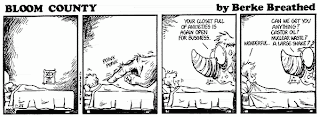Not the Place, But the Person
Our day began with a trip to the Garden Tomb. This newer, alternative site for Calvary and the empty tomb looks more like what we imagine that place once looking like. There is a "Skull Hill" and a tomb with only one burial place finished (and the rolling stone is and has been missing). The deterioration of the Skull Hill, however, is disheartening. It's becoming more and more difficult to see the skull outline. The nose is gone from erosion and there are cracks developing in the rock from the constant vibrations of the nearby bus station. But the story remains unchanged, and we remembered that as we view the hill, the tomb and also shared Holy Communion in that place. (Oops...did I forget to tell you it's wine, not Welch's?) The Garden Tomb is always a special place, a respite in the middle of a busy city.
From the Garden Tomb, we took a step back in the story and went to the top of the Mount of Olives (where we passed a United Methodist ministry for sick children). After the obligatory group photo, we viewed the city from the vantage point Jesus would have on Palm Sunday. Mike, our guide, pointed out the stark contrast from one side of the Mount of Olives (Jerusalem) to the other (Judean desert). After the photo op, many of us walked down the side of the mount, following the traditional Palm Sunday route. I always try to imagine Jesus riding a donkey down this steep, steep path. The road today seemed especially slippery. We stopped, as we usually do, at Dominus Flevit ("The Lord Wept"), where Jesus wept over Jerusalem (Luke 19:41-44). Then, on down the path to Gethsemane and the Church of All Nations.
Gethsemane still has an old, 2,000-year-old olive tree growing there—a mere sapling when Jesus prayed here with his disciples. The church on site was built with donations from Christians all around the world—hence, the name. It is meant to be a place of prayer, solitude and peace. There was a worship service going on, so we weren't able to touch or pray by the rock that Jesus prayed on, but being among those ancient (and newer) trees is a beautiful thing.
After lunch, we headed back to the Old City to visit the Western Wall or the "Wailing Wall." The holiest place in Judaism was not very busy today—fewer people praying and studying than I have ever seen there. These massive stones stand as the last piece of the Temple Mount from Jesus' day. I touched those ancient stones, prayed a prayer of blessing for my family and for my church and for our world. And I left written words there as well—prayers for friends and family. Of course, there is no magic in papers stuck in the crevices of the wall. It's not about the Wall; it's about the God we pray to, the God who worked in this place throughout all of history.
Around the corner from the Western Wall are the Southern Steps, also known as the Teaching Steps. These first-century steps were uncovered relatively recently, and though the gates into the Temple Mount are sealed, these steps are likely the way Jesus entered into and out of the Temple when he was here. We saw the "huge stones" the disciples referred to (Mark 13:1) as well as the "pinnacle of the Temple" from which the devil tempted Jesus to jump off of (the southwest corner of the Temple mount, the highest point—Matthew 4:4-7). Still, standing there, it's near impossible to not sense a connection with Jesus since so much of his ministry and the last week of his life centered on this place. It's unfortunate groups are not really allowed on top of the Temple Mount anymore, but once again it's not so much the place as the God—the Christ—who walked here, whom we follow.
Tomorrow is our last day in Israel...and we're headed back to the desert!



Comments
Post a Comment